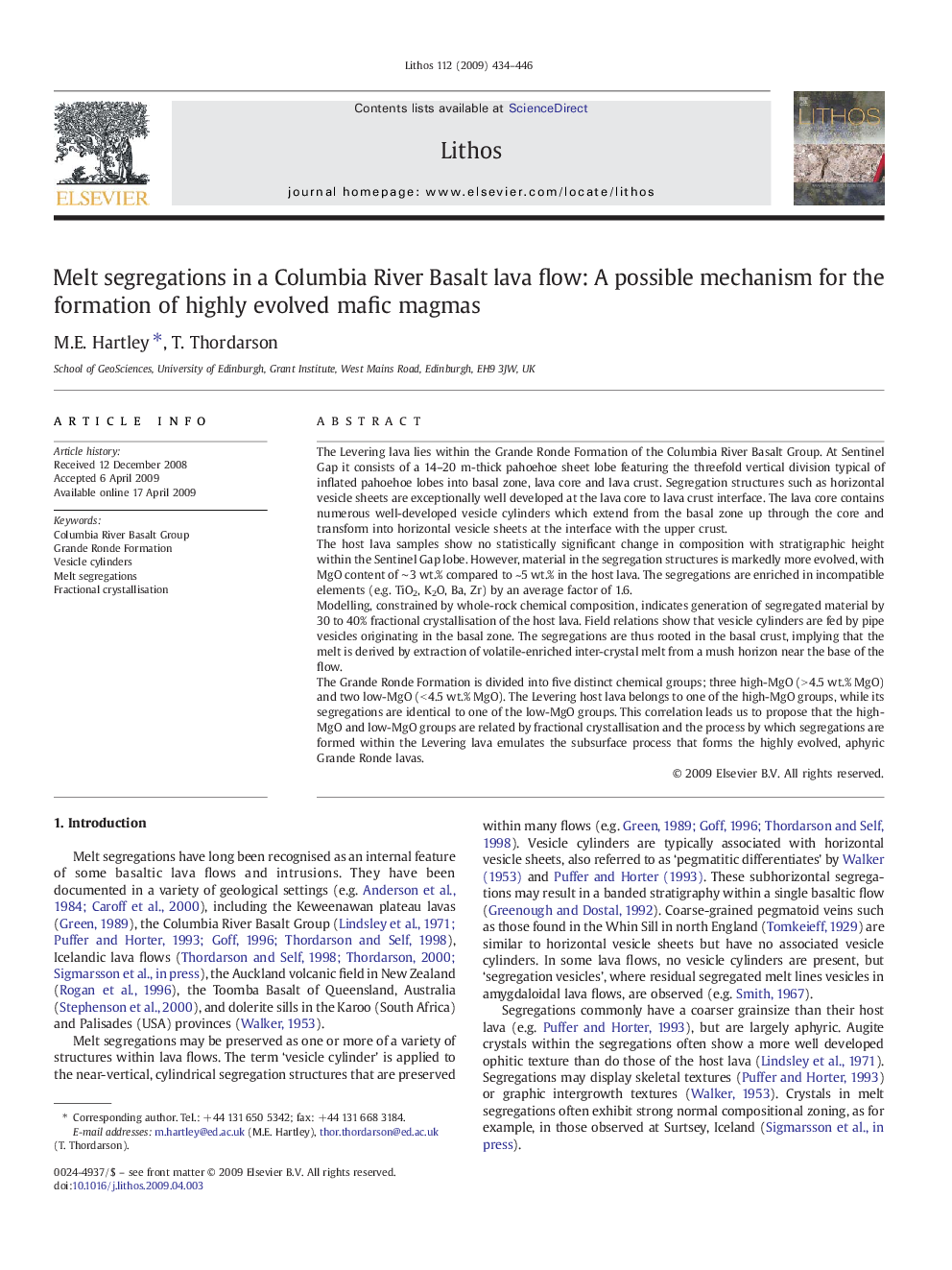| Article ID | Journal | Published Year | Pages | File Type |
|---|---|---|---|---|
| 4717085 | Lithos | 2009 | 13 Pages |
The Levering lava lies within the Grande Ronde Formation of the Columbia River Basalt Group. At Sentinel Gap it consists of a 14–20 m-thick pahoehoe sheet lobe featuring the threefold vertical division typical of inflated pahoehoe lobes into basal zone, lava core and lava crust. Segregation structures such as horizontal vesicle sheets are exceptionally well developed at the lava core to lava crust interface. The lava core contains numerous well-developed vesicle cylinders which extend from the basal zone up through the core and transform into horizontal vesicle sheets at the interface with the upper crust.The host lava samples show no statistically significant change in composition with stratigraphic height within the Sentinel Gap lobe. However, material in the segregation structures is markedly more evolved, with MgO content of ∼ 3 wt.% compared to ~5 wt.% in the host lava. The segregations are enriched in incompatible elements (e.g. TiO2, K2O, Ba, Zr) by an average factor of 1.6.Modelling, constrained by whole-rock chemical composition, indicates generation of segregated material by 30 to 40% fractional crystallisation of the host lava. Field relations show that vesicle cylinders are fed by pipe vesicles originating in the basal zone. The segregations are thus rooted in the basal crust, implying that the melt is derived by extraction of volatile-enriched inter-crystal melt from a mush horizon near the base of the flow.The Grande Ronde Formation is divided into five distinct chemical groups; three high-MgO (> 4.5 wt.% MgO) and two low-MgO (< 4.5 wt.% MgO). The Levering host lava belongs to one of the high-MgO groups, while its segregations are identical to one of the low-MgO groups. This correlation leads us to propose that the high-MgO and low-MgO groups are related by fractional crystallisation and the process by which segregations are formed within the Levering lava emulates the subsurface process that forms the highly evolved, aphyric Grande Ronde lavas.
